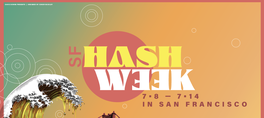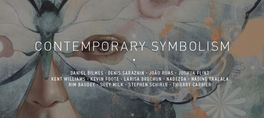Sat August 24, 2024
Transition Times Part II: Re-configuring Structures of Power at Turk and Taylor
SEE EVENT DETAILS
Transition Times Part II: Re-configuring Structures of Power is a continuation of the TurkxTaylor Initiative's effort to collectively imagine ways to dismantle and reconfigure structures of power. The work presented reconfigures the building at the corner of Turk and Taylor Streets, which was the landmark site of Compton's Cafeteria Riot, a queer grassroots uprising against police violence in August 1966. The exhibition highlights the building's current use as a "halfway house" operated by private prison company GEO Group and serves as a call to action to liberate this historical queer and trans site.
To disentangle the idea of structural reconfiguration, this exhibition explores how mechanisms of power manifest in the building and the neighborhood. To counter those mechanisms, we consider ways of local resistance that inspire us to propose alternative ways of relating. We aim to translate these alternative ways of relating by reconfiguring the mechanisms of power through using the structure of the building itself. The exercise is not about architectural design specifically, but about speculative exploration, where there are no limits or constraints. We are working with abstract space, in the void of what can be. This is a utopian exercise to conjure new realities and make space for the broadest vision of justice possible.
show less
To disentangle the idea of structural reconfiguration, this exhibition explores how mechanisms of power manifest in the building and the neighborhood. To counter those mechanisms, we consider ways of local resistance that inspire us to propose alternative ways of relating. We aim to translate these alternative ways of relating by reconfiguring the mechanisms of power through using the structure of the building itself. The exercise is not about architectural design specifically, but about speculative exploration, where there are no limits or constraints. We are working with abstract space, in the void of what can be. This is a utopian exercise to conjure new realities and make space for the broadest vision of justice possible.
Transition Times Part II: Re-configuring Structures of Power is a continuation of the TurkxTaylor Initiative's effort to collectively imagine ways to dismantle and reconfigure structures of power. The work presented reconfigures the building at the corner of Turk and Taylor Streets, which was the landmark site of Compton's Cafeteria Riot, a queer grassroots uprising against police violence in August 1966. The exhibition highlights the building's current use as a "halfway house" operated by private prison company GEO Group and serves as a call to action to liberate this historical queer and trans site.
To disentangle the idea of structural reconfiguration, this exhibition explores how mechanisms of power manifest in the building and the neighborhood. To counter those mechanisms, we consider ways of local resistance that inspire us to propose alternative ways of relating. We aim to translate these alternative ways of relating by reconfiguring the mechanisms of power through using the structure of the building itself. The exercise is not about architectural design specifically, but about speculative exploration, where there are no limits or constraints. We are working with abstract space, in the void of what can be. This is a utopian exercise to conjure new realities and make space for the broadest vision of justice possible.
read more
To disentangle the idea of structural reconfiguration, this exhibition explores how mechanisms of power manifest in the building and the neighborhood. To counter those mechanisms, we consider ways of local resistance that inspire us to propose alternative ways of relating. We aim to translate these alternative ways of relating by reconfiguring the mechanisms of power through using the structure of the building itself. The exercise is not about architectural design specifically, but about speculative exploration, where there are no limits or constraints. We are working with abstract space, in the void of what can be. This is a utopian exercise to conjure new realities and make space for the broadest vision of justice possible.
show less
Date/Times:
80 Turk Street, San Francisco, CA 94103
The Best Events
Every Week in Your Inbox
From Our Sponsors
UPCOMING EVENTS
Great suggestion! We'll be in touch.
Event reviewed successfully.









